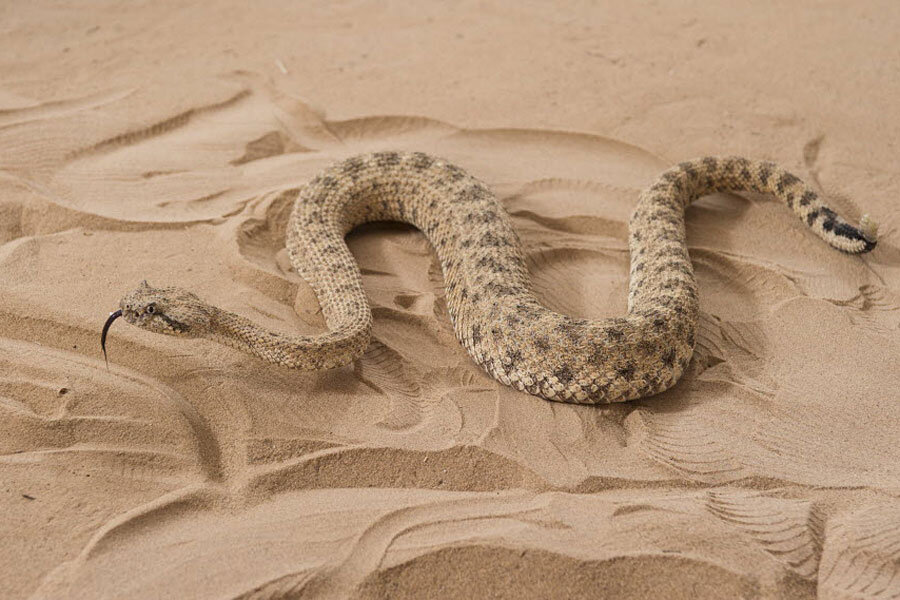Scientists study sidewinding reptiles to improve snakebot
Loading...
| Washington
How do you make a better snake robot? You study snakes, of course.
Researchers on Thursday said they conducted experiments to learn precisely how sidewinder rattlesnakes are able to climb sandy hills, then applied the reptiles' repertoire to an existing snake robot so it could do the same thing.
The study, published in the journal Science, is an example of how scientists are applying knowledge of biology to improve technology.
Snake-like robots, rather than robots that move on wheels, offer unique capabilities for such complicated tasks as search-and-rescue operations in collapsed structures and inspecting nuclear power plants, the researchers said.
"The snake robot can thread through tightly packed space to access locations that people and conventional machinery cannot," said robotics professor Howie Choset of the Robotics Institute at Carnegie Mellon University in Pittsburgh.
Carnegie Mellon robotics researcher Hamid Marvi, who worked on the study while at Georgia Tech, explained snakes' unique abilities.
"Snakes are the champion animal for moving on a wide range of complex terrain," Marvi said. "They have different gaits and can switch between them as needed. They have a special gait, sidewinding, for successfully climbing on sandy hills."
The researchers observed the venomous sidewinder rattlesnake species Crotalus cerastes, a denizen of the southwestern United States, as it moved in a large enclosure at Zoo Atlanta filled with sand from the Arizona desert.
The researchers raised the enclosure to create different angles in the sand and used high-speed video cameras to better understand how the rattlers were moving their bodies.
They found that the snakes improved their ability to climb sandy slopes by increasing the amount of their body that makes contact with the granular surface, using a unique wave motion.
The researchers applied their observations to a snake robot developed at Carnegie Mellon. That "snakebot" had been able to use one element of sidewinding motion to traverse level terrain but was unable to climb sandy inclines that snakes easily handle.
But once the snakebot was programmed with the wave motion employed by rattlesnakes it succeeded in climbing sandy slopes.
"Now the robot can climb on inclinations of up to 20 degrees on loose sand," Marvi said.
Before this study, the snake robot had trouble in climbing even moderate sandy slopes of about 10 degrees, added Carnegie Mellon Robotics Institute researcher Chaohui Gong.
"Our initial idea was to use the robot as a physical model to learn what the snakes experienced," said Daniel Goldman, a professor at Georgia Tech's School of Physics. "By studying the animal and the physical model simultaneously, we learned important general principles that allowed us to not only understand the animal, but also to improve the robot."
The snakebot is made up of a series of 17 aluminum links with 16 joints, measuring about 37 inches (94 cm) long and 2 inches (5 cm) in diameter. It contains a motor, electronics, computer and sensors.







